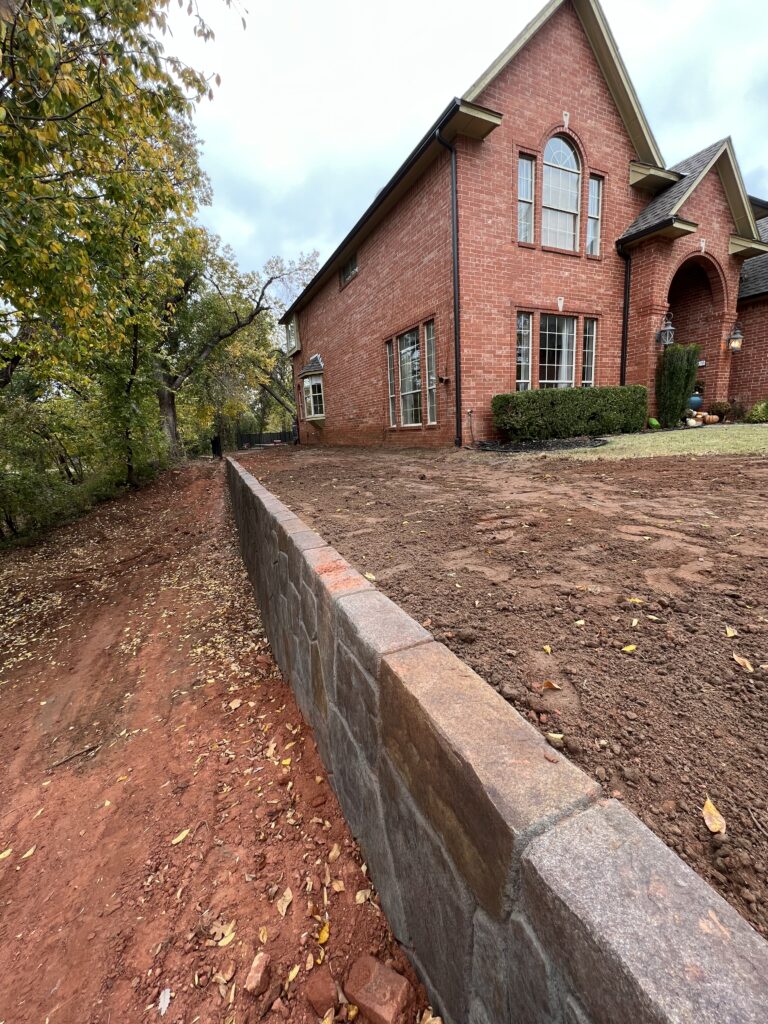Retaining walls are essential in supporting soil, preventing erosion, and protecting property from landslides.
However, not all retaining walls are created equal, and choosing the wrong type of wall for a specific application can have disastrous consequences. In this blog post, we will explore why you should not use segmental block retaining walls on the bottom side of a structure and why monolithic concrete walls are a far better choice.
First, let’s define what we mean by segmental block retaining walls and monolithic concrete walls. Segmental block retaining walls comprise precast concrete blocks that interlock to form a wall. These blocks are usually smaller and lighter than monolithic concrete walls, making them easier to handle and install. Monolithic concrete walls, on the other hand, are cast in place using a formwork system. They are made of a single, solid piece of concrete, typically thicker and heavier than segmental block walls.
Now that we have defined the two types of walls let’s explore why segmental block walls are not a good choice for the bottom side of a structure. One of the main reasons is that segmental block walls are less substantial than monolithic concrete walls. Segmental blocks rely on interlocking to create stability, which the movement of soil or water pressure can compromise. Over time, these walls can shift or settle, leading to failure. In contrast, monolithic concrete walls are much stronger and more durable, and they can withstand significant soil pressures and are less likely to fail over time.
Another issue with segmental block walls is that they can be more prone to leaks than monolithic concrete walls. The interlocking blocks can create small gaps allowing water to seep through, leading to water damage and erosion. Monolithic concrete walls, on the other hand, are solid and do not have these gaps, making them more waterproof.
Regarding aesthetics, monolithic concrete walls are also a far better choice than segmental block walls. We can customize monolithic walls to match a property’s design and style, with various finishes and textures available. They can also be colored to match the surrounding landscape, creating a seamless and cohesive look. In contrast, segmental block walls have a uniform and industrial look that can be unappealing to some property owners.
Lastly, monolithic concrete walls are far better for stabilizing soil than segmental block walls. Monolithic walls can be designed to be much thicker and more profound than segmental block walls, providing excellent stability and support. They can also be reinforced with steel and other materials to increase their strength further. In contrast, segmental block walls are limited in thickness and depth, making them less effective at stabilizing soil.
At ADC Hardscapes, we understand the importance of choosing the right type of wall for a specific application. That’s why we craft our retaining walls using monolithic concrete, ensuring they are strong, durable, and aesthetically pleasing. We stand behind the quality of our walls and offer a lifetime warranty on all our products. Our walls are custom-designed to match the unique needs of each property, ensuring that they provide the best possible support and protection.

